Oxycodone
$500.00 $320.00
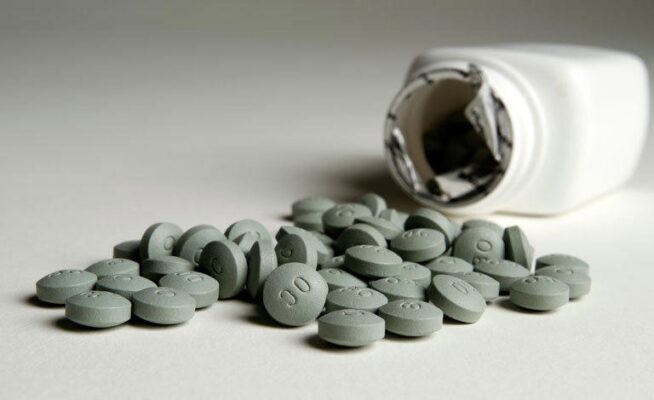 Overview
Overview
This medication is used to help relieve moderate to severe pain. Oxycodone belongs to a class of drugs known as opioid analgesics. It works in the brain to change how your body feels and responds to pain.
How to use
Read the Medication Guide provided by your pharmacist before you start taking oxycodone and each time you get a refill. If you have any questions, ask your doctor or pharmacist.
Take this medication by mouth as directed by your doctor. You may take this drug with or without food. If you have nausea, it may help to take this drug with food. Ask your doctor or pharmacist about other ways to decrease nausea (such as lying down for 1 to 2 hours with as little head movement as possible).
Avoid eating grapefruit or drinking grapefruit juice while using this medication unless your doctor or pharmacist says you may do so safely. Grapefruit can increase the chance of side effects with this medicine. Ask your doctor or pharmacist for more details.
If you are using the liquid form of this medication, carefully measure the dose using a special measuring device/spoon. Do not use a household spoon because you may not get the correct dose. Ask your doctor or pharmacist if you are not sure how to check or measure the oxycodone dose.
The dosage is based on your medical condition and response to treatment. Do not increase your dose, take the medication more frequently, or take it for a longer time than prescribed. Properly stop the medication when so directed.
Pain medications work best if they are used when the first signs of pain occur. If you wait until the pain has worsened, the medication may not work as well.
If you have ongoing pain (such as due to cancer), your doctor may direct you to also take long-acting opioid medications. In that case, this medication might be used for sudden (breakthrough) pain only as needed. Other pain relievers (such as acetaminophen, ibuprofen) may also be prescribed with this medication. Ask your doctor or pharmacist about using oxycodone safely with other drugs.
Suddenly stopping this medication may cause withdrawal, especially if you have used it for a long time or in high doses. To prevent withdrawal, your doctor may lower your dose slowly. Tell your doctor or pharmacist right away if you have any withdrawal symptoms such as restlessness, mental/mood changes (including anxiety, trouble sleeping, thoughts of suicide), watering eyes, runny nose, nausea, diarrhea, sweating, muscle aches, or sudden changes in behavior.
When this medication is used for a long time, it may not work as well. Talk with your doctor if this oxycodone medication stops working well.
Though it helps many people, this medication may sometimes cause addiction. This risk may be higher if you have a substance use disorder (such as overuse of or addiction to drugs/alcohol). Take this medication exactly as prescribed to lower the risk of addiction. Ask your doctor or pharmacist for more details.
Tell your doctor if your pain does not get better or if it gets worse.
Side effects Of Oxycodone
See also Warning section.
Nausea, vomiting, constipation, lightheadedness, dizziness, or drowsiness may occur. Some of these side effects may decrease after you have been using this medication for a while. If any of these effects persist or worsen, tell your doctor or pharmacist promptly.
To prevent constipation, eat dietary fiber, drink enough water, and exercise. You may also need to take a laxative. Ask your pharmacist which type of laxative is right for you.
To reduce the risk of dizziness and lightheadedness, get up slowly when rising from a sitting or lying position.
Remember that your doctor has prescribed this oxycodone medication because he or she has judged that the benefit to you is greater than the risk of side effects. Many people using this medication do not have serious side effects.
Tell your doctor right away if you have any serious side effects, including: interrupted breathing during sleep (sleep apnea), mental/mood changes (such as agitation, confusion, hallucinations), severe stomach/abdominal pain, difficulty urinating, signs of your adrenal glands not working well (such as loss of appetite, unusual tiredness, weight loss).
Get medical help right away if you have any very serious side effects, including: fainting, seizure, slow/shallow breathing, severe drowsiness/difficulty waking up.
A very serious allergic reaction to this drug is rare. However, get medical help right away if you notice any symptoms of a serious allergic reaction, including: rash, itching/swelling (especially of the face/tongue/throat), severe dizziness, trouble breathing.
This is not a complete list of possible side effects. If you notice other effects not listed above, contact your doctor or pharmacist.
In the US – Call your doctor for medical advice about side effects. You may report side effects to FDA
In Canada – Call your doctor for medical advice about side effects. You may report side effects to Health Supervisor
Warnings & Precautions
Before taking oxycodone, tell your doctor or pharmacist if you are allergic to it; or to other opioid pain relievers (such as oxymorphone); or if you have any other allergies. This product may contain inactive ingredients, which can cause allergic reactions or other problems. Talk to your pharmacist for more details.
Before using this medication, tell your doctor or pharmacist your medical history, especially of: brain disorders (such as head injury, tumor, seizures), breathing problems (such as asthma, sleep apnea, chronic obstructive pulmonary disease-COPD), kidney disease, liver disease, mental/mood disorders (such as confusion, depression), personal or family history of a substance use disorder (such as overuse of or addiction to drugs/alcohol), stomach/intestinal problems (such as blockage, constipation, diarrhea due to infection, paralytic ileus), difficulty urinating (such as due to enlarged prostate), gallbladder disease, disease of the pancreas (pancreatitis).
This drug may make you dizzy or drowsy. Alcohol or marijuana (cannabis) can make you more dizzy or drowsy. Do not drive, use machinery, or do anything that needs alertness until you can do it safely. Avoid alcoholic beverages. Talk to your doctor if you are using marijuana (cannabis).
Before having surgery, tell your doctor or dentist about all the products you use (including prescription drugs, nonprescription drugs, and herbal products).
Liquid products may contain sugar, aspartame, and/or alcohol. Caution is advised if you have diabetes, alcohol dependence, liver disease, phenylketonuria (PKU), or any other condition that requires you to limit/avoid these substances in your diet. Ask your doctor or pharmacist about using this product safely.
Older adults may be more sensitive to the side effects of this drug, especially confusion, dizziness, drowsiness, and slow/shallow breathing.
During pregnancy, this medication should be used only when clearly needed. It may harm an unborn baby. Discuss the risks and benefits with your doctor. (See also Warning section.) This drug passes into breast milk and may have undesirable effects on a nursing infant. Tell the doctor right away if your baby develops unusual sleepiness, difficulty feeding, or trouble breathing. Consult your doctor before breast-feeding.
Storage
Store at room temperature away from light and moisture. Do not store in the bathroom. Keep all medications away from children and pets. See also Warning section.
Do not flush medications down the toilet or pour them into a drain unless instructed to do so. Properly discard this product when it is expired or no longer needed. For more details, read the Medication Guide, or consult your pharmacist or local waste disposal company.
Drug interactions
See also Warning and How to Use sections.
Drug interactions may change how your medications work or increase your risk for serious side effects. This document does not contain all possible drug interactions. Keep a list of all the products you use (including prescription/nonprescription drugs and herbal products) and share it with your doctor and pharmacist. Do not start, stop, or change the dosage of any medicines without your doctor’s approval.
Some products that may interact with this drug include: certain pain medications (mixed opioid agonist/antagonists such as pentazocine, nalbuphine, butorphanol), naltrexone.
The risk of serious side effects (such as slow/shallow breathing, severe drowsiness/dizziness) may be increased if this medication is taken with other products that may also cause drowsiness or breathing problems. Tell your doctor or pharmacist if you are taking other products such as other opioid pain or cough relievers (such as codeine, hydrocodone), alcohol, marijuana (cannabis), drugs for sleep or anxiety (such as alprazolam, lorazepam, zolpidem), muscle relaxants (such as carisoprodol, cyclobenzaprine), or antihistamines (such as cetirizine, diphenhydramine).
Check the labels on all your medicines (such as allergy or cough-and-cold products) because they may contain ingredients that cause drowsiness. Ask your pharmacist about using those products safely.
Other medications can affect the removal of oxycodone from your body, which may affect how oxycodone works. Examples include azole antifungals (such as ketoconazole), macrolide antibiotics (such as erythromycin), mifepristone, HIV medications (such as ritonavir), rifamycins (such as rifabutin, rifampin), certain drugs used to treat seizures (such as carbamazepine, phenytoin), among others.
This medication may interfere with certain laboratory tests (including amylase/lipase levels), possibly causing false test results. Make sure laboratory personnel and all your doctors know you use this oxycodone drug.
Overdose
If someone has overdosed and has serious symptoms such as passing out or trouble breathing, give them naloxone if available, then call 911. If the person is awake and has no symptoms, call a poison control center right away. US residents can call their local poison control center
More
If you are taking this medication on a regular schedule and miss a dose, take it as soon as you remember. If it is near the time of the next dose, skip the missed dose. Take your next dose at the regular time. Do not double the dose to catch up.
Do not share this medication with others. Sharing it is against the law.
This medication has been prescribed for your current condition only. Do not use it later for another condition unless told to do so by your doctor. A different medication may be necessary in that case.
Ask your doctor or pharmacist if you should have naloxone available to treat opioid overdose. Teach your family or household members about the signs of an opioid overdose and how to treat it.
Selected from the Licensed Solutions data included with permission and copyrighted by FDB, inc., 2014. This copyrighted material has been downloaded and Licensed data provider and is not for distribution in professional healthcare settings. This information is generalized and not intended as specific medical advice. Consult your healthcare professional before taking any drug or commencing or discontinuing any course of oxycodone treatment.
oxycodone
oxycodone
oxycodone
oxycodone
oxycodone
oxycodone
oxycodone

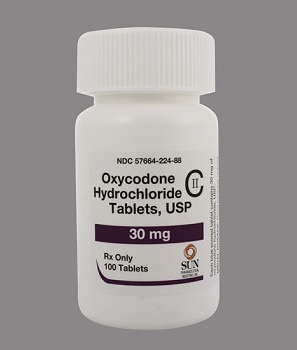
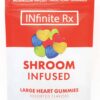


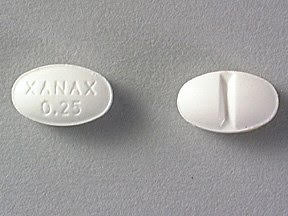


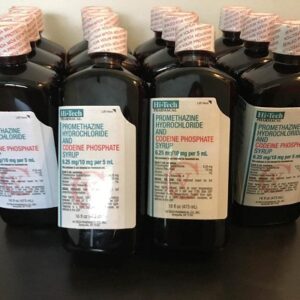


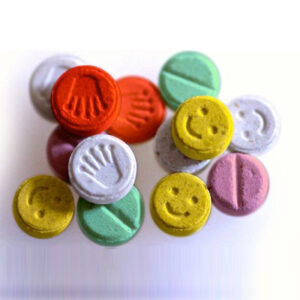






Reviews
There are no reviews yet.